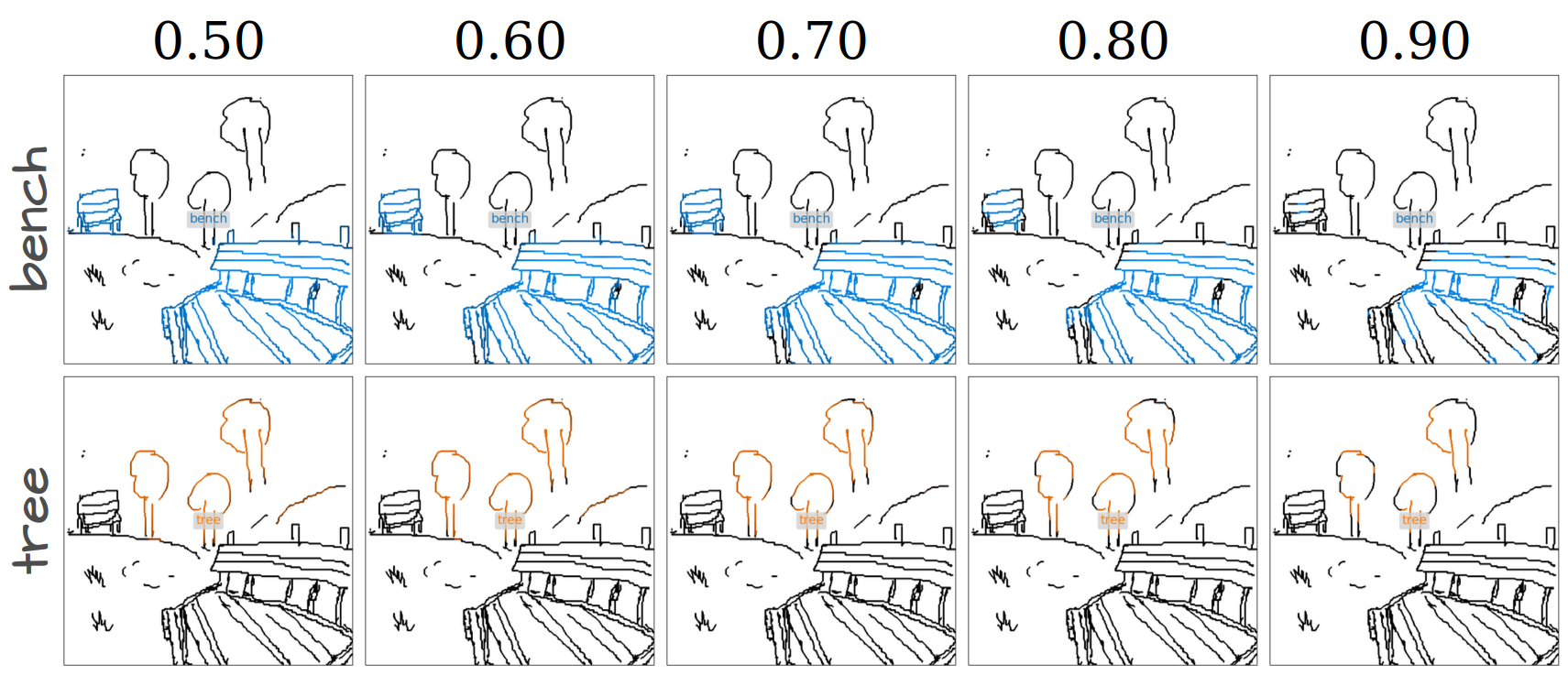We present the first language-supervised scene sketch segmentation method. Our approach employs a dual-level network architecture designed to effectively disentangle different object categories within scene sketches, utilizing only brief captions as guidance.
Open Vocabulary Scene Sketch Semantic Understanding, Ahmed Bourouis, Judith Ellen Fan, Yulia Gryaditskaya.
- 26.02.2024: Train code released
- 26.02.2024: Paper accepted at CVPR'24 🎉
- 05.12.2023: Demo code is released.
- Given a desirable set of categories (or a brief caption) for a given sketch image, we encode these categories with the CLIP text encoder.
- We compute the per-patch cosine similarity between the class embeddings and the scene sketch patch embeddings. The resulting similarity matrix represents the category label probabilities for each individual patch.
- To generate a pixel-level similarity map, we reshape the resulting per-patch similarity maps then upscale to the dimensions of the original scene sketch using bi-cubic interpolation.
If we want to isolate just a few categories in the sketch, we only retain pixels with category-sketch similarity scores above a pre-set threshold value. Below we visualize this process for different threshold values.
- The version requirements of core dependencies.
pip install torch==1.9.1+cu111 torchvision==0.10.1+cu111 torchaudio==0.9.1 -f https://download.pytorch.org/whl/torch_stable.html
-
Download checkpoint
sketch_seg_best_miou.pthfrom here and save it incheckpointfolder. -
A use case can be found in
demo.py. From just a sketch image and condidate categories, we can generate scene sketch segmentation maps.
python demo.py --config-file vpt/configs/prompt/cub.yaml checkpoint_path checkpoint/sketch_seg_best_miou.pth sketch_path demo/sketch_1.png output_path demo/results/output.png threshold 0.6
config-file: main config setups for experiments and explanation for each of them.checkpoint_path: path for the model checkpoint.sketch_path: sketch image example path.output_path: path to save the output sketch.threshold: the threshold value for class-pixel similarity scores to retain.
-
Upload the dataset from here and put it in /DATA directory.
-
Run the following for training the model.
python train.py --config-file vpt/configs/prompt/cub.yaml MODEL.PROMPT.NUM_TOKENS 3 MODEL.PROMPT.LOG "first_run" save_every 5 learning_rate 1e-6 bz 16 WANDB False
config-file: main config setups for experiments and explanation for each of them.checkpoint_path: path for the model checkpoint.MODEL.PROMPT.NUM_TOKENS: number of trainable visual tokens to use for CLIP fine-tuning.MODEL.PROMPT.LOG: log name.save_every: save model weights every # epochs.learning_rate: learning ratebz: training batch size.WANDB: whether to log your training to WandB or not.
If you find this paper useful in your research, please consider citing:
@misc{bourouis2023open,
title={Open Vocabulary Semantic Scene Sketch Understanding},
author={Ahmed Bourouis and Judith Ellen Fan and Yulia Gryaditskaya},
year={2023},
eprint={2312.12463},
archivePrefix={arXiv},
primaryClass={cs.CV}
}


